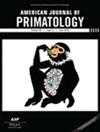CSViewer for Analysts: II. Analytic Tools and Visualization of Founder Lineages, Social Groups, and Reproduction Dynamics of the Cayo Santiago Rhesus Macaque Colony
Abstract
The Cayo Santiago (CS) rhesus macaque colony has raised a total of over 11,000 animals in a free-ranging setting very close to the natural environment. The well-kept individual and family records, as well as social group management data, have been a valuable source for anthropological research. However, the various sources of data have been stored in separation, and there was no straightforward way for researchers to access them directly. Since 2019, an ongoing effort supported through an NSF collaborative grant has been collecting morphology and imagery data from the CS-derived skeleton collection. One specific aim is to build an integrative database to combine newly collected osteology data (bone measurement) and existing genealogy and demographic information. A second aim is to develop a software application (codenamed as CSViewer for Analysts) to provide user-friendly interfaces for the research community to access and analyze the data. In this paper, we present a set of results generated by using standard data science tools and techniques, which help construct a holistic view of the CS rhesus colony along multiple dimensions. The matrilineal family lineage and pedigree can be visualized using various tree forms, as well as patrilineal lineages traced back to the mid-1970s. Social group evolution charts are generated and add new features to the original records. Reproduction patterns are studied in the context of group interaction and animal transfer logs. Cross-referencing between genealogy and osteology data can also be accomplished. Most of these charts are supported in the CSViewer app with convenient tooltip features to show details as needed. Selection based on attributes like founder line, sex, and birth season can be applied to tailor charts to a research project so that researchers can zoom into a data set that can best support their analytics goals.


 求助内容:
求助内容: 应助结果提醒方式:
应助结果提醒方式:


